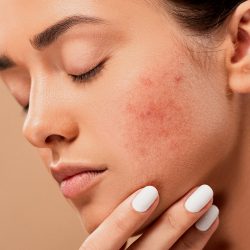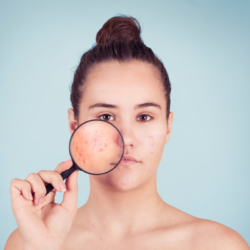Yes, the start of the new school year is finally upon us… some lucky kids may still be in the water sipping chilled cocktails, but for the vast majority of us, it’s time for the final preparations before the start of the new school year! Holidays are often hectic, and you have to shake up your habits and those of your children. Granted, it’s not always easy to readjust… So we’re slowly getting back into the swing of things by following these simple tips: )
Get back to a balanced diet
Our selection of healthy foods:
| Product | Description |
|---|---|
| Eric Favre Chocotella Healthy | Chocolate-hazelnut spread with no added sugar, concentrated in protein (+21%) and low in sugar. Suitable for spooning, in pastries, on toast, as a snack or for breakfast. |
| Insudiet Chocolate Wafers | Biscuits rich in protein, fibre and Omega 3, with dark chocolate chips. Perfect for an indulgent break with an herbal tea. |
| ECOIDEES ORGANIC CHIA SEEDS 200G | Organic, vegan, raw, gluten-free chia seeds, rich in omega-3 (15 to 17% alpha-linolenic acid). Versatile in the kitchen. |
| Goji berries | Small orange berries with a slightly sweet taste, renowned for their medicinal properties in Asia. Often eaten dried or in juice. |
| Dr Theiss Kombucha | A traditional Mongolian drink, naturally carbonated and tangy, made from a sweet infusion of plants or tea with yeast and bacteria. Low in calories. |
Get back into a regular sleep pattern
It’s normal to go to bed later when you’re on holiday. The days are longer and you want to make the most of them. But now it’s time to go back to school, and it’s vital for our bodies to go to bed at regular times. An adult should sleep at least 7 to 10 hours a night. Visit
It’s essential to establish a bedtime ritual that includes calm activities. Create an atmosphere conducive to sleep by lowering the volume of your voice, eliminating sources of distraction such as television, computers and video games, and creating a softly lit environment. A successful bedtime ritual should be repeated every night, putting your child to bed at a regular time. Be there for them, give them a cuddle, tell them a story or sing them a lullaby. The most important thing is to surround him so that he can calm his mind in preparation for a good night’s sleep.
A little AROMA tip : essential oils of mandarin orange and lavender, for example, calm even the most agitated children and make it easier for them to fall asleep.
How to establish a bedtime routine for children
A bedtime routine for children generally consists of three or four activities, such as having a snack, brushing teeth, putting on pyjamas and reading a book. These activities should always be carried out in the same order. To make the routine even more effective, start preparing the house by dimming the lights and turning off the screens before bedtime.
Typical bedtime activities that have shown beneficial effects on sleep include:
- A nutritious snack or bottle/breast feeding.
- A bath or nappy change.
- Brushing teeth and visiting the toilet.
- Reading a book.
- A lullaby or singing a song together.
- Massage, cuddles and rocking.
- Talking about their day.
The bedtime routine should end with a goodnight kiss and lights out. You should leave the room while your child is drowsy but not yet asleep. This way, they learn to fall asleep on their own, and they won’t panic if they wake up in the middle of the night to find you gone. Establish a consistent bedtime that gives your child enough time to sleep the recommended number of hours for their age.
Taking care of their skin
Taking care of your skin after the summer is essential if you want to have healthy, glowing skin when you go back to school. During the summer season, our skin is exposed to a wide range of aggressions, such as the scorching heat, intense sunlight, regular application of sun cream, swimming in salt water or chlorine in the pool. All these experiences, although pleasant, can leave our skin thirsty and in urgent need of repair. So how can you revive your skin to restore its softness and radiance?
Summer aggression on the skin
Summer is synonymous with sunny days on the beach, swimming and tanning, but all this can have a harmful impact on our skin. The sun’s UV rays can damage the outer layer of the skin, causing premature ageing and the appearance of wrinkles. Sun cream, while necessary to protect the skin from sunburn, can often leave a sticky residue. What’s more, prolonged contact with salt or chlorinated water can dry out the skin, sometimes leaving it rough and dehydrated.
Back-to-school tips for skin that’s in tip-top shape
To revitalise your skin after the rigours of summer, here are a few simple tips to incorporate into your routine:
- Weekly Body Scrub: Opt for a gentle body scrub once a week. Exfoliants will remove dead skin cells, promoting cell renewal and leaving your skin softer and smoother. Choose a scrub suited to your skin type for optimum results.
- Use a superfatted gel: After a shower or bath, use a superfatted gel. These products are specially designed to gently cleanse while maintaining skin hydration. They help restore the skin’s natural hydrolipidic film, which is essential for protecting it from external aggressors.
- Moisturise your skin: Hydration is the key to maintaining healthy skin. Choose a quality moisturiser suited to your skin type and apply it regularly. Concentrate on the driest areas, such as elbows and knees. Moisturising will revitalise your skin and keep it supple.
- Continuous sun protection: Even after the summer’s over, it’s important to continue using daily sun protection. Opt for a moisturiser containing SPF to protect your skin from sun damage all year round.
- Drink plenty of water: Hydration on the inside is just as important as hydration on the outside. Drink enough water throughout the day to keep your skin well hydrated.
By following these tips, you can help your skin recover from summer aggression and regain its natural vitality. Well-maintained skin will leave you feeling radiant and ready to face the new year with confidence.
FAQ
Q1. Why is it important to prepare for the start of the new school year?
- Preparing for the start of the new school year means getting back into a regular rhythm, minimising stress and optimising your chances of success.
Q2. How can we return to a balanced diet after the holidays?
- You can return to a balanced diet by choosing nutritious foods for breakfast, lunch and dinner, while limiting sugars and fats.
Q3. What are the benefits of getting back to a regular sleep pattern?
- A regular sleep pattern promotes health, well-being and performance, for adults and children alike.
Q4: How can we help children adapt to a new sleep pattern?
- Create a soothing bedtime ritual that includes a subdued atmosphere, a regular bedtime and parental attention.
Q5. How can we look after our skin after the summer?
- Look after your skin by exfoliating, using a superfatted gel and moisturising regularly.
Q6 Which essential oils can help calm restless children before bedtime?
- Mandarin and lavender essential oils are recommended for calming children before bedtime.
Q7. How can I maintain a balance between my studies and my personal life when I go back to school?
- The balance between studies and personal life can be maintained by planning a realistic timetable and taking the time to relax.
Q8. What healthy foods are recommended for a successful start to the new academic year?
- Foods such as oatmeal, legumes, fresh fruit and grilled fish are excellent choices for healthy eating.
Q9: How can I avoid mid-morning hunger pangs?
- Mid-morning cravings can be avoided by choosing foods rich in fibre and protein for breakfast.
Q10. What general advice do you have for a healthier start to the new school year? – Drink enough water, choose healthy snacks and limit your intake of sweets and processed foods.
References:
- https://sante.gouv.fr/IMG/pdf/Sommeil_un_carnet_pour_mieux_comprendre.pdf







